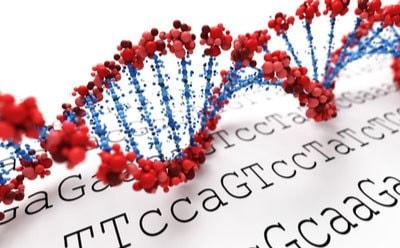Next-Generation Sequencing

Next-generation sequencing (NGS) is a term that broadly captures several related technologies that enable massively parallel or deep sequencing coverage for a selected region or the entire genome of an organism. Essential within the discipline of genomics-based research, sequencing technologies have existed for decades. However, the continual advancement of NGS or massively parallel DNA and RNA sequencing technologies have provided researchers with increases in genome-wide sequencing coverage and data analysis tools while rapidly decreasing in cost. Applications for NGS extend beyond whole genome analysis as it has significant implications for recent advancements in fundamental genomics and disease research alike.
Related Technical Articles
- Regardless of next-generation sequencing (NGS) platform, universal and index adapter sequences are required for the proper assembly of sample fragments.
- MISSION siRNA Universal Negative Controls are an essential component to any siRNA experiment. Using a Negative siRNA control allows the researcher to create a baseline for mRNA knockdown efficiency. MISSION siRNA Universal Negative Controls have been tested in human, rat, and mouse cells. All have been carefully designed to have no homology to known gene sequences.
- MISSION Positive Control siRNA, designed using the Rosetta siRNA Design Algorithm, serve as ideal complement to any siRNA silencing experiment. All MISSION Positive Control siRNA have been validated to work, so that you can spend more time silencing your gene of interest and less time on optimizing internal controls.
- Onxy Quencher emits heat instead of light and offers and improved signal-to-noise ratio over fluorescent quenchers.
- Next-generation sequencing (NGS) revolutionized genomic research, and is now playing a crucial role in the clinical environment.
- See All (17)
Related Protocols
- The SeqPlex DNA Amplification Kit for whole genome amplification (WGA) is designed to facilitate next-generation sequencing (NGS) from extremely small quantities or from degraded/highly fragmented DNA
- Annealing is the process of heating and cooling two single-stranded oligonucleotides with complementary sequences.
- The SeqPlex RNA Amplification kit provides a method for amplification of total RNA or isolated mRNA prior to entry into the workflows of the commonly used deep sequencing platforms.
- GenomePlex® is a Whole Genome Amplification (WGA) method that allows the researcher to generate a representative amplification of genomic DNA
- WTA2, a Whole Transcriptome Amplification (WTA) method, allows for representative amplification of nanogram quantities of total RNA in less than 4 hours without 3-bias
- See All (5)
NGS Methods Overview
While the methodology and reagents for NGS are continuously evolving, there are now numerous NGS systems that are available to researchers. Commonly used platforms incorporate the use of several critical steps in the NGS workflow, including sample or library preparation, cluster generation, sequencing, and data analysis. Sample preparation typically involves either DNA amplification or the addition of sequence linkers or adaptors. Cluster generation of each DNA sequence is when DNA containing the covalently attached linker hybridizes to a solid surface for bridge PCR amplification, or by alternate methods such as emulsion PCR. Additionally, there are many DNA sequencing methods, including sequencing by ligation, sequencing by synthesis, pyrosequencing, and ion semiconductor sequencing. Each sequencing method involves varying reaction steps and chemistries that ultimately determine the length of each sequence (read length), error rate, and reagent cost.
Analytical Approaches for NGS Data Analyses
A final element for all NGS workflows is the critical data analysis step that occurs after sequencing. While each NGS platform and workflow produce an enormous amount of digital information captured on computers, the raw data set must be analyzed by bioinformaticians using a continuously increasing number of analytical tools for read alignment and mapping, such as Bowtie, Galaxy, and many others. Many of the developments in the field of NGS technologies has come from the merger of numerous scientific fields to develop and optimize the analysis and interpretation of such large data sets. Depending on the specific application needs, researchers are now able to use these powerful tools to sequence entire genomes, exomes, or transcriptomes for fundamental and disease research studies.
To continue reading please sign in or create an account.
Don't Have An Account?